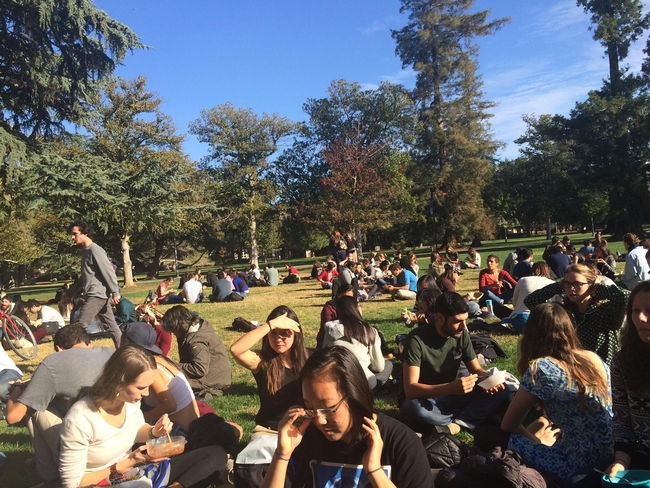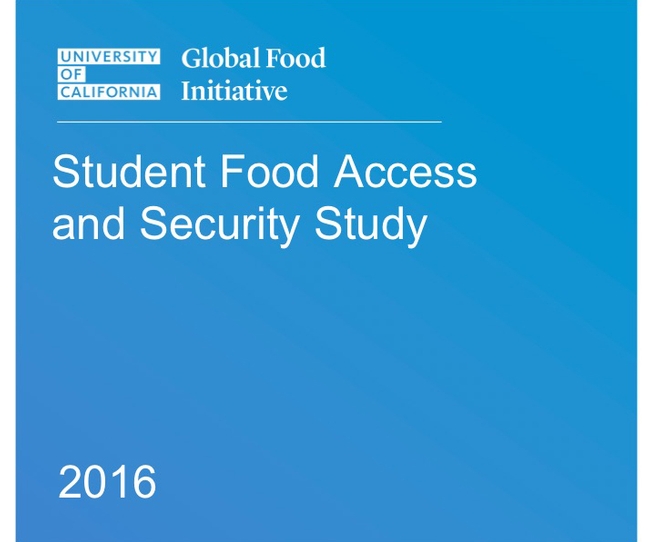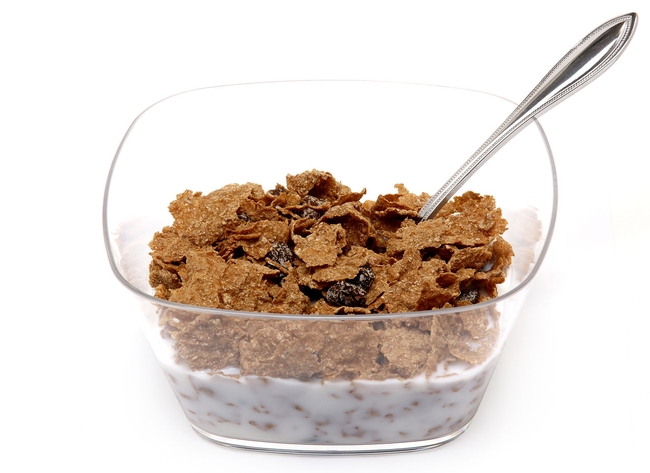Posts Tagged: Nutrition Policy Institute
UC students in 'protected environment' are vulnerable to food insecurity
Many people are surprised to learn that students enrolled in the state's premiere higher-education system are vulnerable to food insecurity, said Suzanna Martinez, a researcher with UC ANR's Nutrition Policy Institute, on the KPFA radio program Up Front. (Martinez's segment begins at the 20:23 mark.)
Martinez was interviewed for the program by host Pat Brooks, who was sitting in for Dennis Bernstein. Martinez said that anecdotal evidence of food insecurity on UC campuses was already popping up when UC President Janet Napolitano provided funding to each of the campuses to address the issue. The UC president also provided funding to the UC Nutrition Policy Institute to survey students across the system to document and understand food insecurity on UC campuses.
The report, issued last week, was based on the responses to a survey by about 9,000 students. Nineteen percent indicated they had “very low” food security and an additional 23 percent were characterized as having “low” food security. The greatest impact, Martinez said, was on the Latino and black student populations. Most of the students struggling with food insecurity had never experienced such circumstances before going away to college.
In response to the survey, Napolitano approved $3.3 million in new funding over the next two years to help students regularly access nutritious food on campus and off.
Brooks asked Martinez what is the new report's 'call to action.'
"Our hope is to eliminate food insecurity, and with this report we are hoping that others will be dedicated to this and committed to the work as well,” Martinez said.
UC commits $3.3 million to improve student access to nutritious food
Guided by the findings of a survey conducted by UC ANR's Nutrition Policy Institute, UC President Janet Napolitano announced July 11 she would commit $3.3 million in new funding over the next two years to help UC students regularly access nutritious food. UC's survey findings and response were reported by the San Francisco Chronicle, East Bay Times, Los Angeles Times, KCBS and KPCC.
The online survey was administered to a randomly selected sample of students from all 10 UC campuses in spring 2015. It is part of the UC Global Food Initiative, which promotes a nutritious, sustainable food supply.
According to the NPI survey, 19 percent of the nearly 9,000 participating UC students indicated they had “very low” food security, which the USDA defines as experiencing reduced food intake at times due to limited resources. An additional 23 percent were characterized as having “low” food security, defined by the USDA as reduced quality, variety or desirability of diet, with little or no indication of reduced food intake.
“I wasn't expecting that level of food insecurity in students,” said NPI director Lorrene Ritchie, who led the study, to Jessie Qian of the Daily Californian. “Adults who aren't informed would think students are just passive, spending their money on other things or just complaining … but it's really that big of a problem.”
According to the UC news release, UC has developed an action plan tailored to the needs of individual campuses while maximizing coordination among them. The plan includes:
- Expanding food pantry storage and access
- Increasing collaboration with state and county offices to register students for CalFresh, California's nutrition assistance program
- Establishing and expanding awareness campaigns on student support services and food access
- Expanding the existing Swipe Out Hunger programs, which allow university students to donate excess dollars on their meal plan to reduce hunger on campuses
- Integrating food preparation and secure storage space into new student housing design and construction
- Enhancing financial aid communications about housing and food costs
“Among students who reported food insecurity in the past year, we found that for 57 percent this was a new experience – not one they had faced as children,” says Ritchie. “This suggests that students who are on their own for the first time would benefit from financial literacy training and additional information about financial aid, nutrition assistance, and making healthy choices on a limited budget.”
The report Student Food Access and Security Study, authored by NPI research analyst Suzanna Martinez, UC Santa Barbara sustainability coordinator Katie Maynard and Ritchie, can be downloaded at http://npi.ucanr.edu.
UC ANR's Lauren Au is a nutrition hero
She doesn't wear a cape and mask, but childhood nutrition researcher Lauren Au was proclaimed a nutrition hero in Food & Nutrition Magazine. Au is a researcher with the UC Agriculture and Natural Resources (UC ANR) Nutrition Policy Institute
Food & Nutrition Magazine is published by the Academy of Nutrition and Dietetics, the world's largest organization of food and nutrition professionals. Au told the editors that she was drawn to nutrition and dietetics from a prevention perspective. Both her parents passed away from chronic disease at a young age.
"I wanted so desperately to prevent this hardship from happening to my close family and friends," Au said.
In her role with the Nutrition Policy Institute, she strives to fight and prevent childhood obesity by improving federal nutrition initiatives, such as the school lunch program and the national women, infants and children supplemental nutrition program (WIC).
"For example, our WIC research has shown that both online and in-person nutrition education can increase healthier breakfast behaviors, which has the potential to reach close to 8 million low-income mothers and children," Au said. Read more about the WIC research here.
Au told Food & Nutrition Magazine that she finds it personally rewarding to share compelling research with legislators and policy makers.
"It can be extremely powerful," she said. "I just received two large grants to examine the school nutrition environment and the relationship with childhood obesity over the past decade. I am excited to be able to help shape child nutrition legislation in years to come."
New nutrition fact label is a 'victory for consumers'
"It's a victory for consumers. The impact is going to be incredible," said Pat Crawford, director of research at UC ANR's Nutrition Policy Institute. "It's something in the nutrition field we've waited for years and years: to educate the public on how absolutely critical added sugar is and about the risk of heart disease, diabetes, obesity and dental caries."
The nutrition label changes were unveiled last week by First Lady Michelle Obama. The new label has bigger and bolder calorie information. It shows the amount of "total sugar" and below that, it shows "added sugars." The article gave an example of vanilla yogurt. On the current nutrition facts label, a consumer can see how much sugar it contains, but doesn't know how much of the sugar is from natural lactose in the milk and how much added.
Crawford noticed how hard it is to figure out when a friend asked how much added sugar was in Raisin Bran.
"I poured out a cup of cereal. I counted the raisins," Crawford said. She subtracted the amount of natural sugar in the raisins from total sugar listed on the nutrition facts label to determine the amount of added sugar.
The debate over dairy products is being milked for all its worth
Since the 1960s, nutrition experts have encouraged Americans to forgo whole milk in favor of skim or low-fat dairy products. Now some scientists are saying the move to low-fat dairy is tied to the country's obesity crisis, according to an article in The Guardian
Robert Lustig, professor of pediatric medicine at UC San Francisco, said he believes drinking whole milk can lead to lower calorie intake overall because it is more filling than low-fat and non-fat alternatives.
A UC Agriculture and Natural Resources (UC ANR) expert shared a different viewpoint. Lorrene Ritchie, director of the UC ANR Nutrition Policy Institute, said low-fat or skim milk products are still preferable to whole milk because liquid calories are not as filling as equivalent calories from solid food. Nationwide, the goal for most people should be to reduce calorie intake.
"Until we decrease calorie intake on a population level, we are unlikely to see much reversal in the obesity epidemic," Ritchie said.
Before the end of 2015, the federal government is expected to release its revised Dietary Guidelines for Americans. According to the Guardian article, the guidelines are expected to tout vegetables, fruits, whole grains, legumes, nuts, seafood and "low- or non-fat dairy." The guidelines inform the USDA's dietary infographic, which at the moment takes the form of a plate half filled with vegetables and fruit, and the other half with a small portion of protein food and whole grains.
The Nutrition Policy Institute has been advocating for the addition of water on the MyPlate icon to reinforce its position that plain tap water is the best choice for quenching thirst.







